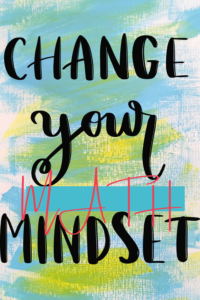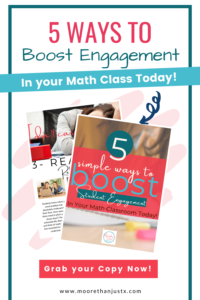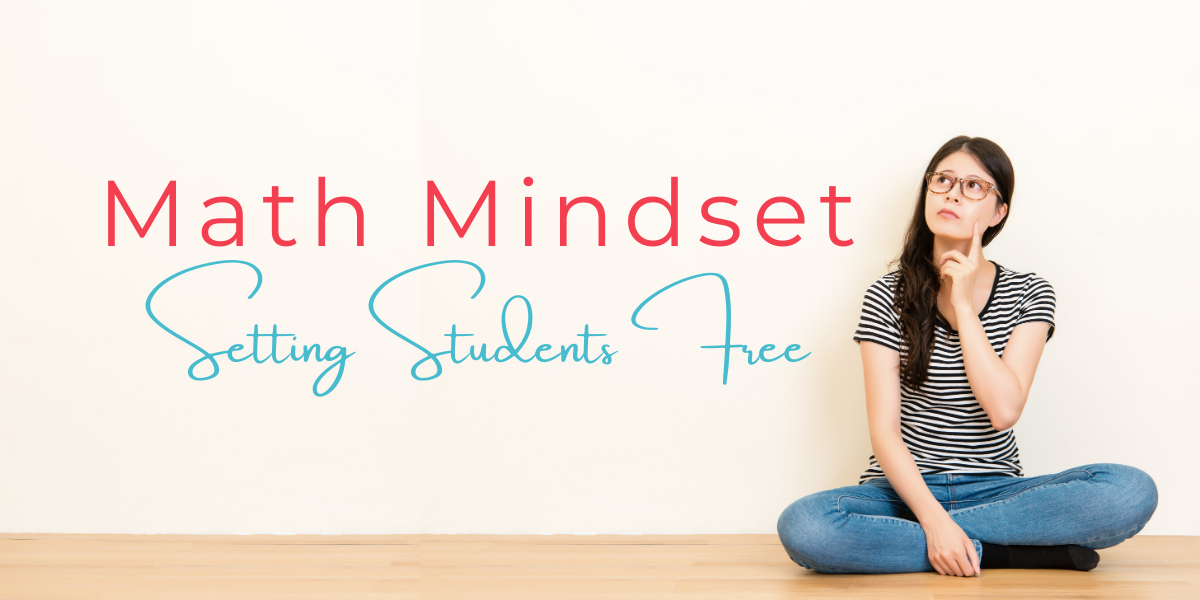How a Math Mindset removes the “I don’t know” barrier
Student engagement strategies can address anything from the “It’s too hard” to the “I don’t care”. Today, we look at how to use math mindset strategies as a key to building student engagement by releasing students of the “I don’t know” barrier.
“I don’t know”
This “I don’t know” is not focused on not knowing the material–we covered that in “it’s too hard”. The “I don’t know” we are addressing here, is that I don’t know how to participate without judgement or fear. Students don’t know how to participate in our lessons for one of two reasons: they are afraid of participating and providing wrong information or answers, or they genuinely don’t know what to do in order to participate fully. Thankfully, we’ve got answers to both of those and they lie within creating a safe learning environment for our students. This starts with developing their math mindset.
Math Positive Mindsets
What is a mathematical mindset? Your math mindset is like a growth mindset specific to the math classroom. It incorporates your ideals and beliefs about mathematics and your ability to learn mathematics. In the book, Mathematical Mindsets, Jo Boaler builds on Carol Dweck’s growth mindset ideal and goes into great detail about how teachers can work to build positive math mindsets within your classroom.
A key component to help students develop a growth/math mindset is that they must feel safe to do so. It is important to establish a safe environment for your students to be open to engaging with mathematics. For our elementary and middle school teachers here, I encourage you to jump over to Local Learners and Co to read up on how Mona consistently incorporates building a positive math mindset with her students.
Growth Mindset + HS Math
 With a growth mindset, we know that failure is simply a part of the learning process. When we normalize failure and encourage a growth mindset, we prime our students for responsible risk taking. We encourage responsible risk taking with our students by providing them with established norms and protocols within our classrooms. Students have the safety of a protocol, while providing them the opportunity to take more risks with their work. One great strategy that encourages students to share their thoughts and approach math with a growth mindset is the chalk talk. Chalk talks enable students to share their thoughts and learning in a low stakes environment through writing rather than voicing their opinions.
With a growth mindset, we know that failure is simply a part of the learning process. When we normalize failure and encourage a growth mindset, we prime our students for responsible risk taking. We encourage responsible risk taking with our students by providing them with established norms and protocols within our classrooms. Students have the safety of a protocol, while providing them the opportunity to take more risks with their work. One great strategy that encourages students to share their thoughts and approach math with a growth mindset is the chalk talk. Chalk talks enable students to share their thoughts and learning in a low stakes environment through writing rather than voicing their opinions.
Growth Mindset in Math Problem Solving
 If you’ve been around the block with us, you know that problem solving isn’t just a Mathematical Practice to me. Problem solving is at the heart of good mathematics teaching. It’s why I implore you all use real + relevant problems with your students. Growth mindset is essential to math problem solving. Students need to normalize failure as part of the process of truly diving deep into problems. Students thrive when they know what to expect– and problem solving is no exception to that. Similarly to using a chalk talk protocol to share mathematical ideas, I use a problem solving protocol to capture students’ attempts and methods in the problem solving process.
If you’ve been around the block with us, you know that problem solving isn’t just a Mathematical Practice to me. Problem solving is at the heart of good mathematics teaching. It’s why I implore you all use real + relevant problems with your students. Growth mindset is essential to math problem solving. Students need to normalize failure as part of the process of truly diving deep into problems. Students thrive when they know what to expect– and problem solving is no exception to that. Similarly to using a chalk talk protocol to share mathematical ideas, I use a problem solving protocol to capture students’ attempts and methods in the problem solving process.
The Stick With It collaborative problem solving activity again enables students to think through the problem individually first, and then allows for students to open up and share their ideas with classmates. This is more risky than a chalk talk, but promotes reasoning and sense making through mathematical discourse. Again, the key is that students know the strategy to successfully contribute to the learning process. They can therefore engage at a higher level.
Looking for more?

If you are looking for more strategies to boost student engagement, make sure you check out all posts in theStudent Engagement mini-series or grab the complete guide here: 5 Simple Ways to Boost Student Engagement in Math Class. Want some resources to help you establish a math mindset culture in your class? Make sure to check out these 3 tips for building a class culture and class norms to build a growth mindset.
Here’s to boosting our students math mindsets + student engagement!













2 Responses